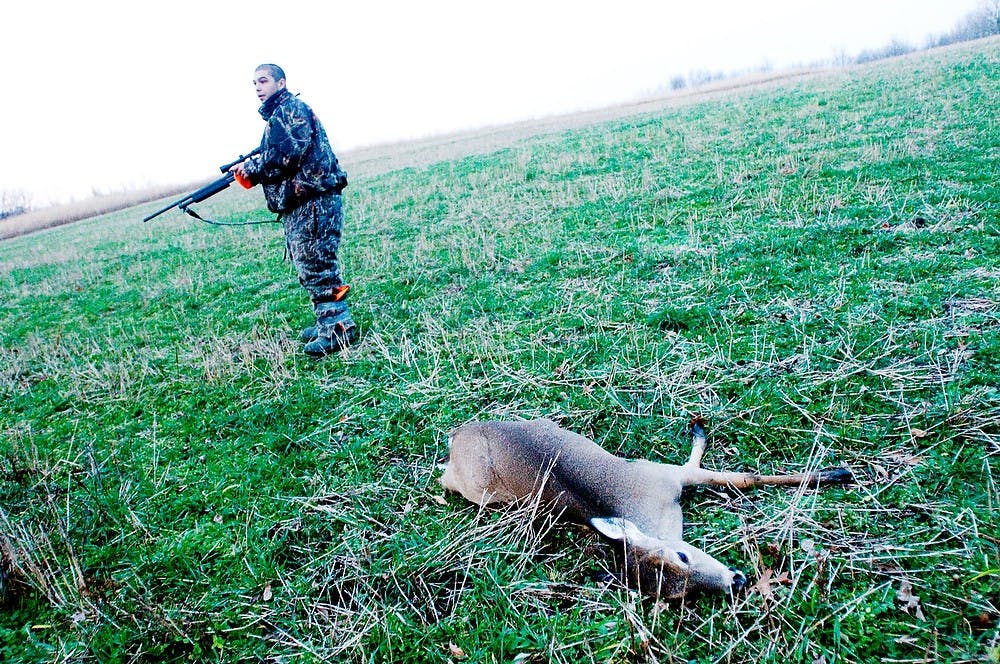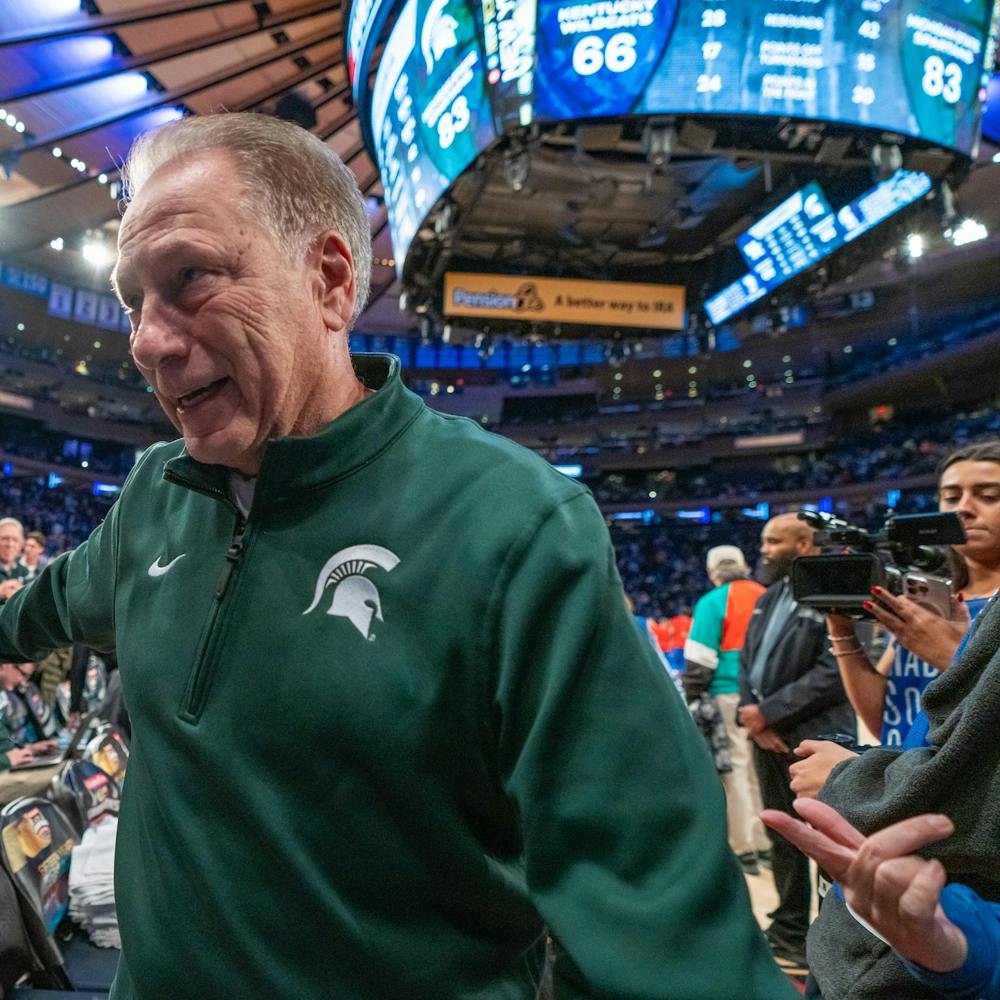This weekend, interdisciplinary studies in social science senior Rob McGuire will not be in East Lansing, but on his family’s farm, hopefully experiencing what some hunters call “buck fever.”
McGuire is one of many hunters loading their guns, as today marks the start of firearm hunting season in Michigan. But, for some hunters, their time in the wild might be cut short because of new regulations placed on the number of antlerless deer licenses hunters can purchase.
An outbreak of epizootic hemorrhagic disease, or EHD, has killed more than 13,000 deer across Michigan since the first EHD-related death was reported earlier this summer, said graduate student Brent Rudolph, deer and elk program leader for the Michigan Department of Natural Resources.
“This has been the largest outbreak we have ever seen,” Rudolph said, adding there is no way to tell exactly how many have died.
In response to the increase in deer deaths, people hunting in the southern half of the Lower Peninsula on private land are allowed only five antlerless licenses, and the limit is now two for public antlerless licenses in some deer management units, including Kalamazoo.
McGuire said he has been involved with hunting most of his life. He said he tracked his first deer when he was 3 years old and shot his first deer at 11 years old. This summer, McGuire said he heard people say they were finding dead deer almost every day.
McGuire said he thinks a lot of people are aware deer have been dying of EHD, and he said it is “terrible.”
EHD is a viral disease transmitted through a bite from a midge, which is a type of biting fly, according to a press release from the Michigan Department of Natural Resources.
Infected deer experience massive internal bleeding and die. Most infected deer are found by water sources, due to a high fever, according to the release.
Rudolph said the only external signs of a deer having EHD might be some swelling in the face or neck, but most must be transported to the MSU’s Diagnostic Center for Population and Animal Health for EHD testing.
But as winter approaches, Rudolph said a large frost will kill, or already has killed, many of the midges, so the cases of EHD will steadily decrease. Still, he said the Michigan Department of Natural Resources has been more aggressive about making hunters aware of the EHD problem before hunting season began.
“We think the (hunters) will make the decision on their own to not take more (deer) than (normal),” Rudolph said. “Before someone goes out to hunt, (they should) see where their own area is (and) what the population is like.”
Agribusiness management sophomore David Penterics said he wanted to go home to his family’s farm in southeast Michigan to hunt the first day of hunting season, but a quiz is holding him up for at least one more day.
Penterics said he heard about EHD causing many deer to die, but his family has not found any dead deer on their land. He said he plans to buy his deer license when he goes home this weekend, and at that time, he will find out if the license-count change applies to his hunting area.
Penterics said he has been hunting since he was 7 years old, and he comes from a line of hunters. He said he has found a new respect for hunting after being away from home at MSU.
“It’s busy (at MSU) with a lot of people. Time goes fast,” Penterics said. “(While hunting,) you get to go outside, … turn off your phone (and) get away from everything and kind of relax.”
Despite the issues facing deer, Rudolph said there is a positive side to the problem.
“When something negative like this happens … there’s always a silver lining,” Rudolph said. “It raises some awareness of the importance of wildlife in the area.”
Firearm hunting season goes through Nov. 30, according to the Michigan Department of Natural Resource’s website.
Support student media!
Please consider donating to The State News and help fund the future of journalism.
Discussion
Share and discuss “Deer disease limits hunting licenses” on social media.







